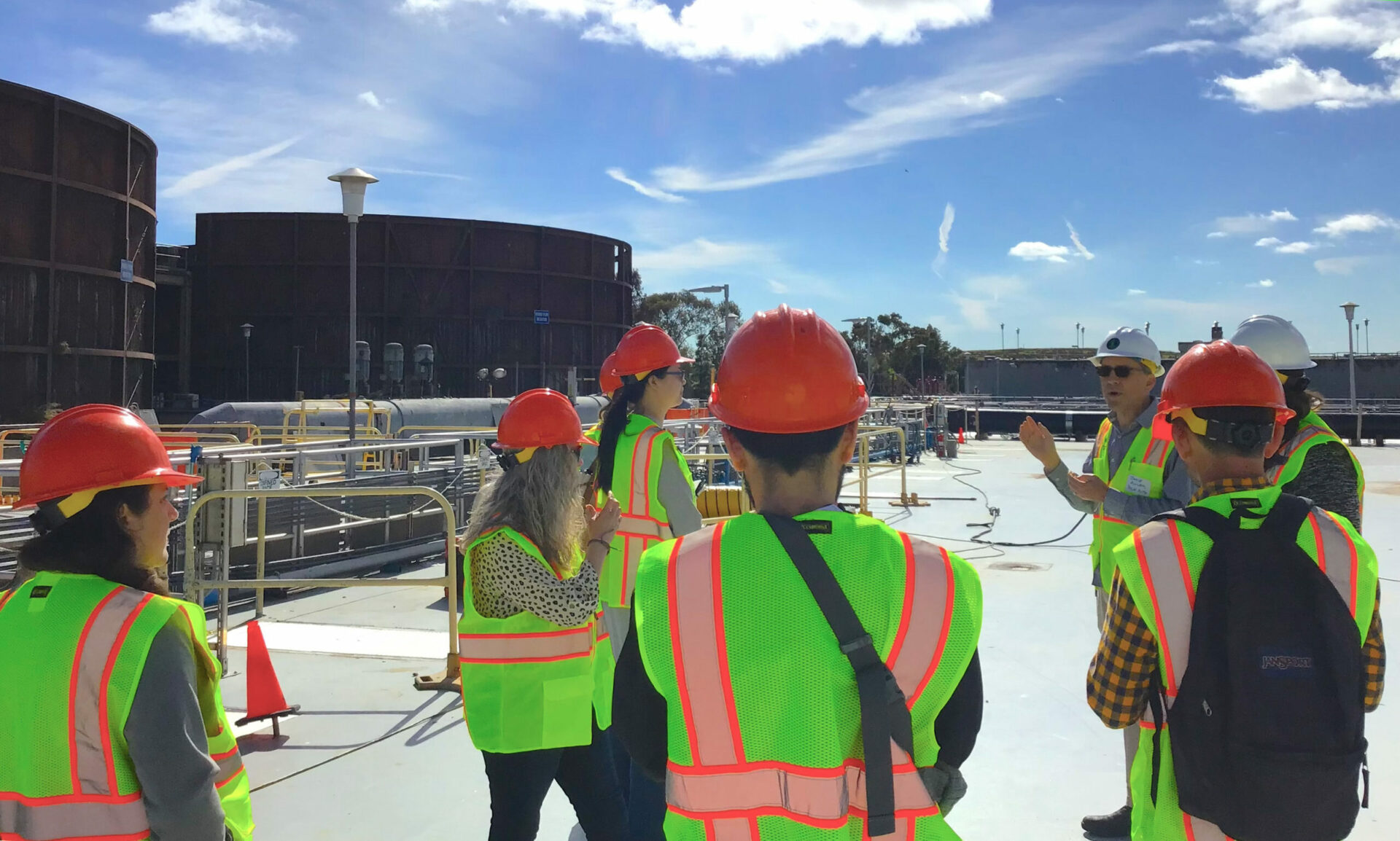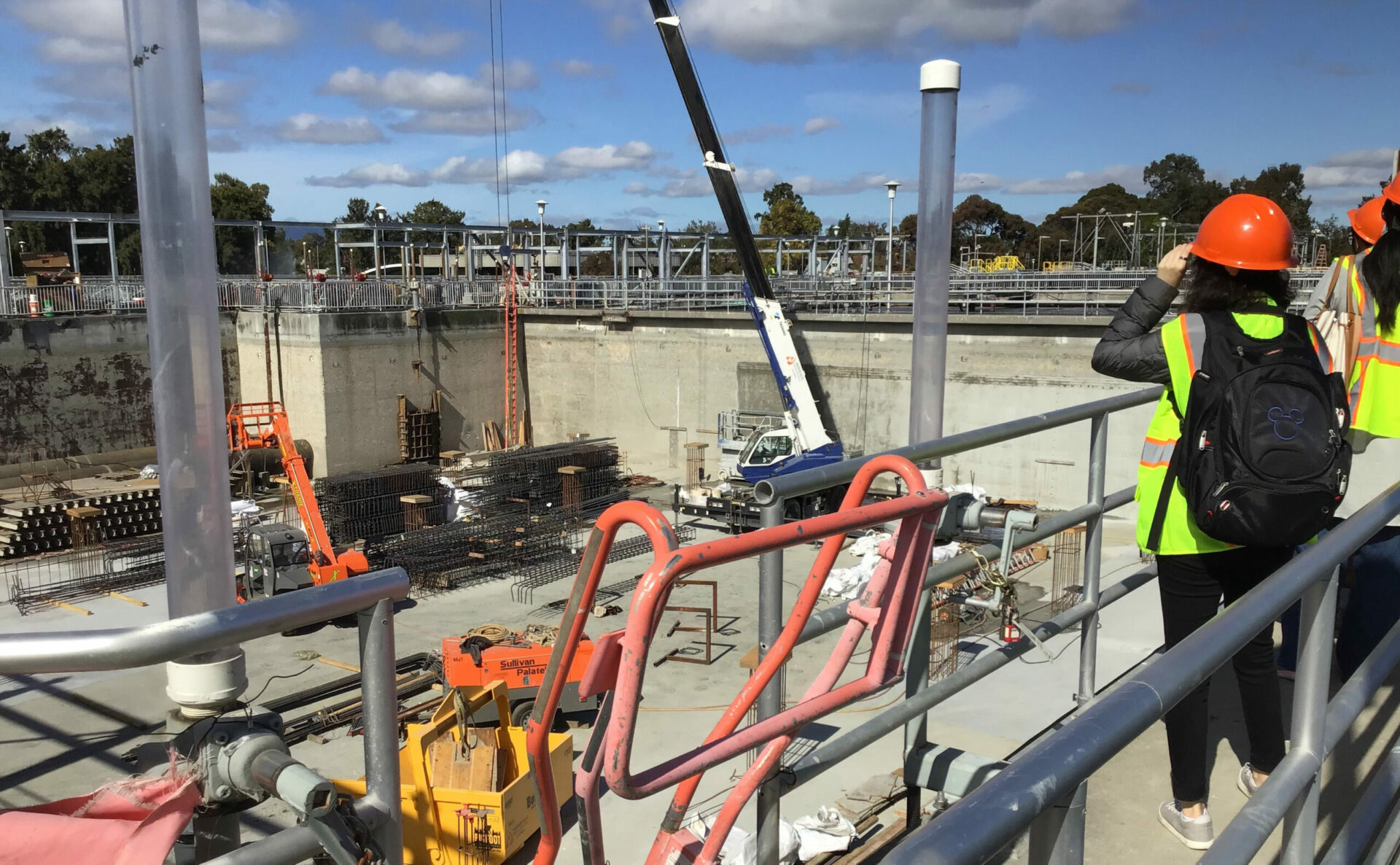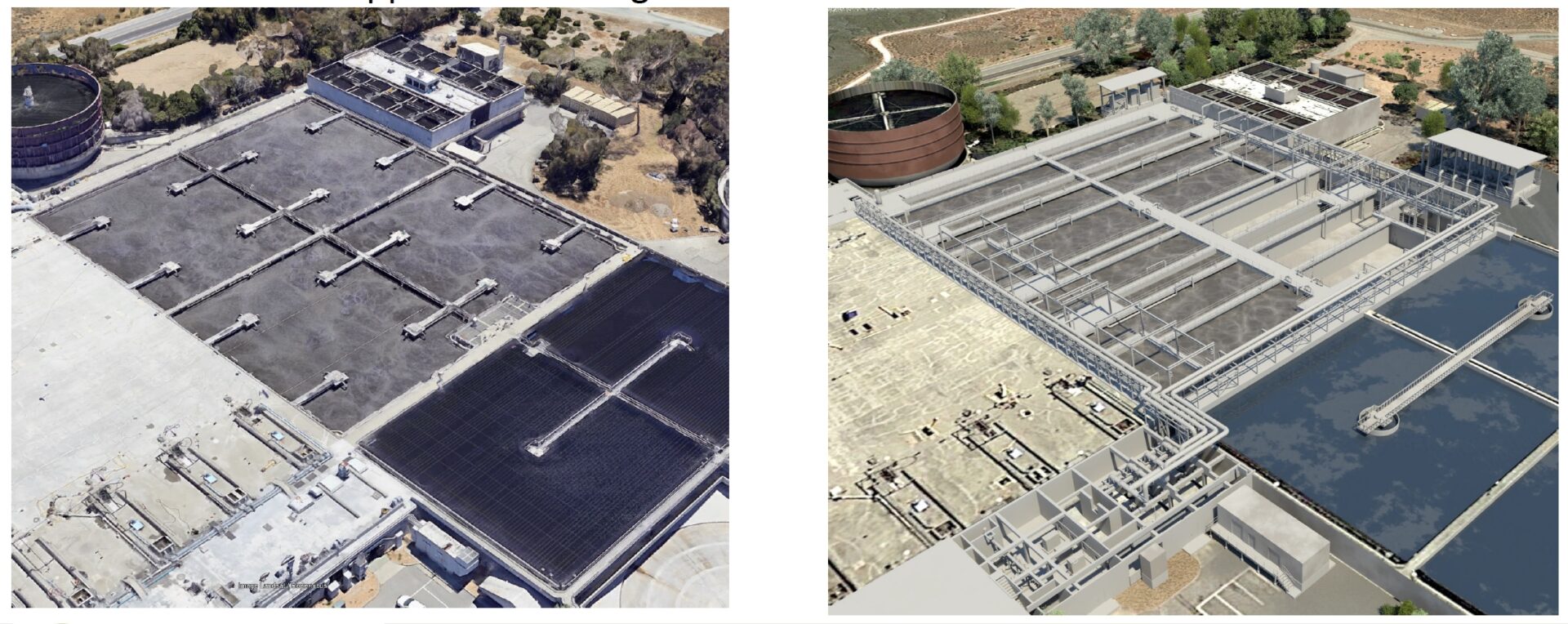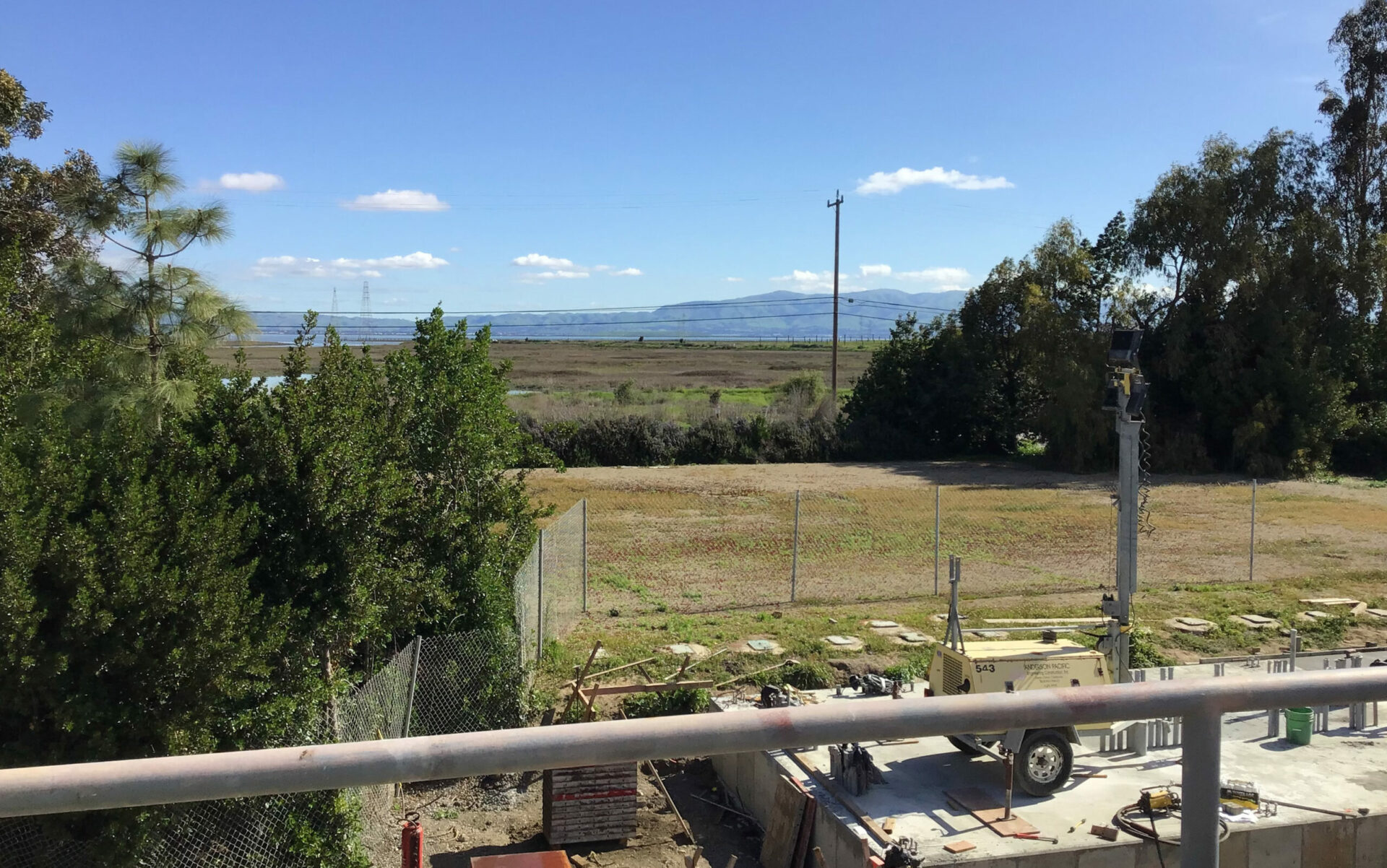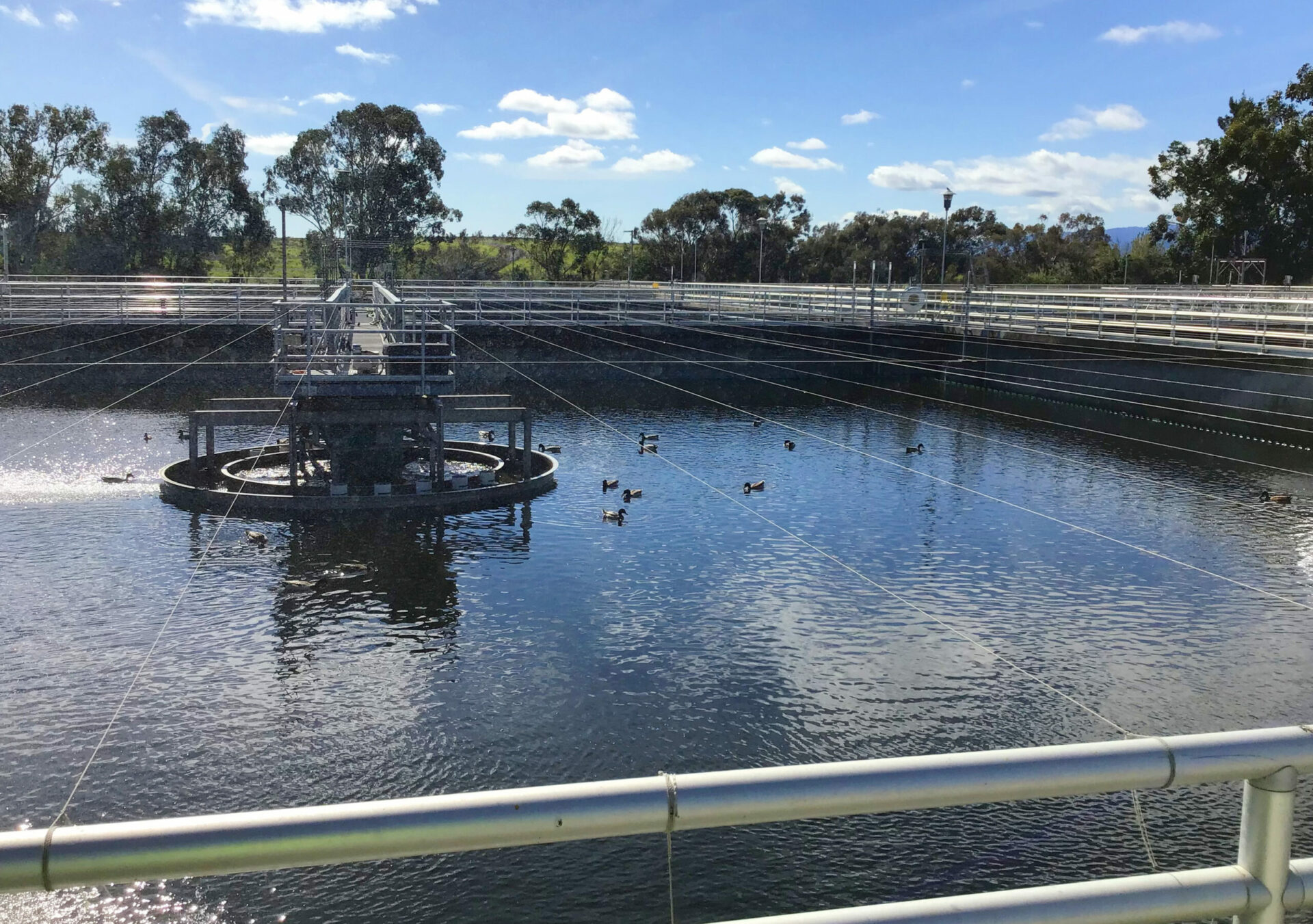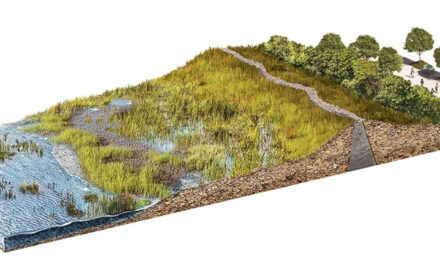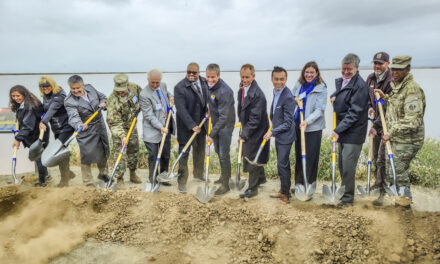Harmful Blooms Spur More Wastewater Upgrades
“Nobody wants to scrap a facility that has decades of useful life in it.”
Palo Alto’s bioreactor towers are aging out, like a lot of the clean water infrastructure constructed around the Bay Area in the 1950s-1970s. Recent wind gusts, swirling around the edges of February’s atmospheric river storms, have not been friendly to the towers either. On a March visit to the Palo Alto Regional Water Quality Control Plant, which treats 18 million gallons of wastewater every day, I could see a big chunk missing from the wall of one rusty cauldron and tumbleweeds caught in the metalwork.
Elsewhere on the 25-acre site, the plant’s facilities are visibly undergoing a $193 million overhaul. The overhaul will help the plant meet increasing regulatory limits on the amount of nitrogen that dischargers can pipe into the shallows of San Francisco Bay.
“The harmful algal blooms and fish kills of 2022 were a game-changer for us,” says the SF Bay Regional Water Quality Control Board’s Assistant Executive Officer Tom Mumley. The board is preparing a draft watershed-wide permit for Bay dischargers, due for release this April for board consideration in June, that would require them to reduce nitrogen loads by 40%.
Sea level rise is another game changer. Like many Bay Area sewage plants at the bottom of sewer-sheds, Palo Alto sits directly adjacent to San Francisco Bay.
“Nobody wants to scrap a facility that has decades of useful life in it, so we have to look for synergistic projects with multiple benefits that also match our city’s sustainability and climate goals,” says the Palo Alto plant’s Assistant Director of Public Works Karin North.
Upgrades underway to an aeration basin at the Palo Alto plant in March 2024. Photo: Ariel R Okamoto
It’s a good thing so much federal infrastructure money is in the pipeline, at least for plants like Palo Alto whose overhaul was shovel-ready. The nutrient (nitrogen is one type) challenge is a big one. Unlike estuaries on other coasts that have been battling algal blooms caused by nutrient inputs from farm runoff and human wastewater for decades, San Francisco Bay is just beginning to feel the photosynthetic heat. Though long protected by its turbid waters (algae can’t bloom where the sun don’t shine), the sediment left behind by historic gold mining upstream has finally washed out of the system (and dams prevent additional inputs). San Francisco Bay’s waters are clearing up, leaving them prone to more frequent algal blooms like the one that left white sturgeon and leopard sharks belly up on Bay beaches and in Lake Merritt in 2022. While some blooms are good for the food web, others steal all the oxygen from the water.
“We wanted to be proactive not reactive about nutrients,” says North, of her plant’s upgrade, which is due for completion by 2029.
“This is going to be extremely costly, ” says Lorien Fono, chair of Bay Area Clean Water Agencies, which represents all the region’s dischargers. Only 14 of the 37 have already enhanced their nutrient removal processes to date.
Fono calls the $16 billion price tag to address the region’s nutrients the most significant investment in its clean water infrastructure since the 1970s.
Mumley agrees, describing the 15 years of research and two prior regional permits that have led to the proposed 40% reduction limit. (The first permit explored the science and management options; the second set soft targets not hard limits). “This is one of the most profound regulatory actions the board has ever considered in terms of cost to the Bay Area community,” he says.
Spread across ratepayers, Fono estimates the clean water infrastructure upgrade costs as about $4,000 per household over time. But money could also come from low-interest state loans like the one Palo Alto got to complete its own $193 million improvements.
The day I toured, one of Palo Alto’s four huge secondary treatment basins was empty and filled with stacked rebar, a crane, and a crew of hardhats. They’d already laid a thicker concrete floor better able to withstand earthquakes and were now reinforcing other hardware. What we were looking at, plant manager James Allen said, were upgrades necessary to take the wastewater and sludge on a more “serpentine path” through aeration basins. “We’ll be moving the material through sections with air on and air off, and sections that treat ammonia and sections that treat nitrogen,” he says. Different microbes thrive in these different conditions and do most of the biology-driven treatment work.
A comparison of existing (at left) versus planned (at right) secondary treatment systems, which will remove an additional 50-60% of the total inorganic nitrogen in wastewater. Photos: Palo Alto Plant
The plant has to do all this while still remaining operational on its small parcel of land hemmed in by San Francisco Bay, which is growing every day. There isn’t much room to move or even park the cars of the construction crews. “Fixing this system is kind of like open heart surgery,” says Allen. The vital organ has to be kept alive — and serving the plant’s 236,000 customers — while repairs are underway.
Upgrades will also include new electrics, a new back-up generator, a new salt removal system (aka water purification system) to enhance recycled water, and a pilot project the rest of the region is watching very closely: a horizontal levee designers prefer to call a “habitat berm.”
As KneeDeep reported in 2022, about a half dozen so-called horizontal levees are proposed around the Bay aimed at both protecting vulnerable wastewater treatment plants from sea level rise and using treated wastewater to irrigate the new levees, and as such improve shoreline habitats for local fish and wildlife. Palo Alto’s will be the region’s second major pilot and the first to have tidal action.
“We’re starting small but hoping to go big,” says the pilot’s senior engineer Samantha Engelage, pointing out a patch of green baylands visible in the distance from one of the catwalks spattered with bird poop my tour group is navigating.
View of the future horizontal levee site in the distance. Photo: Ariel R Okamoto
Engelage hopes to start construction of the innovative levee in summer 2024. Most of the design and regulatory work has been done. Aiding the plant in managing the complex project through construction is the SF Estuary Partnership, which has been shepherding a variety of nature-based infrastructure projects around the Bay through regional approvals, community engagement, and implementation efforts for more than five years.
The experimental levee will be about 500 feet wide and extend for about 100 feet in front of the flood control levee proposed by another local agency. A new 1600-foot pipeline will bring treated wastewater from the plant to the levee and pump it through the planned “ecotone slope” — a mixture of carefully chosen plant species, soils and other nature-based materials. Passing the wastewater through this habitat slope will also help, as they say in sewage treatment jargon, to “polish” it.
“The project will use nature to treat wastewater even more than we do already,” says Engelage, pointing out that the first pilot at San Leandro’s Oro Loma treatment plant removed an astonishing amount of contaminants of emerging concern, not just nitrogen but also tough-to-tackle pharmaceuticals passing through the human gut. This second pilot at Palo Alto will deepen monitoring to include microplastics.
While every treatment plant in the Bay Area will need to do their part to address new nitrogen discharge limits, not all plants can reach the same levels. Equipment, location, resources vary.
“We don’t want any one wastewater plant doing this on their own, it needs to be an integrated approach,” says BACWA’s Fono. The hope is that if the region, as a whole, succeeds in reducing the nitrogen in wastewater discharges by 40%, then some of the smaller plants where it might be too inefficient or expensive to achieve load reductions could help foot the bill for others making the difference. The draft permit leaves room for such trading, assuming compliance is achieved.
Some state policies and funding mechanisms could get in the way of immediate success. Mumley says the state only allows up to 10 years to comply with a new limit, but that might not be long enough for such an enormous infrastructure task.
Likewise, the state revolving fund from which Palo Alto got its low interest loan is currently heavily oversubscribed with many different kinds of projects, insiders say. Even though the fund swelled recently with federal infrastructure dollars, most Bay Area clean water and sewage agencies have struggled to get any money out of it.
“Very little of the federal infrastructure money is allocated for wastewater,” says Fono.
And then of course, there’s the threat multiplier of climate change and drought. Warmer water will spur more algal blooms.
“We need to do a lot in a short time. The question for the final nutrients permit will be how much, how fast?” says Mumley.
Ducks enjoy the clarifying ponds. Photo: Ariel R Okamoto
Palo Alto’s small operation is meanwhile doing its best to address the diverse challenges ahead — nitrogen discharge limits, sea level rise, habitat health, and drought — with all cylinders firing. “We want shoreline resilience, habitat resilience, and drought resilience all in one in our future relationship with the Bay,” says North.
But there are limits. “Even if we sent all our discharges to the moon there would still be algal blooms,” says Allen.






